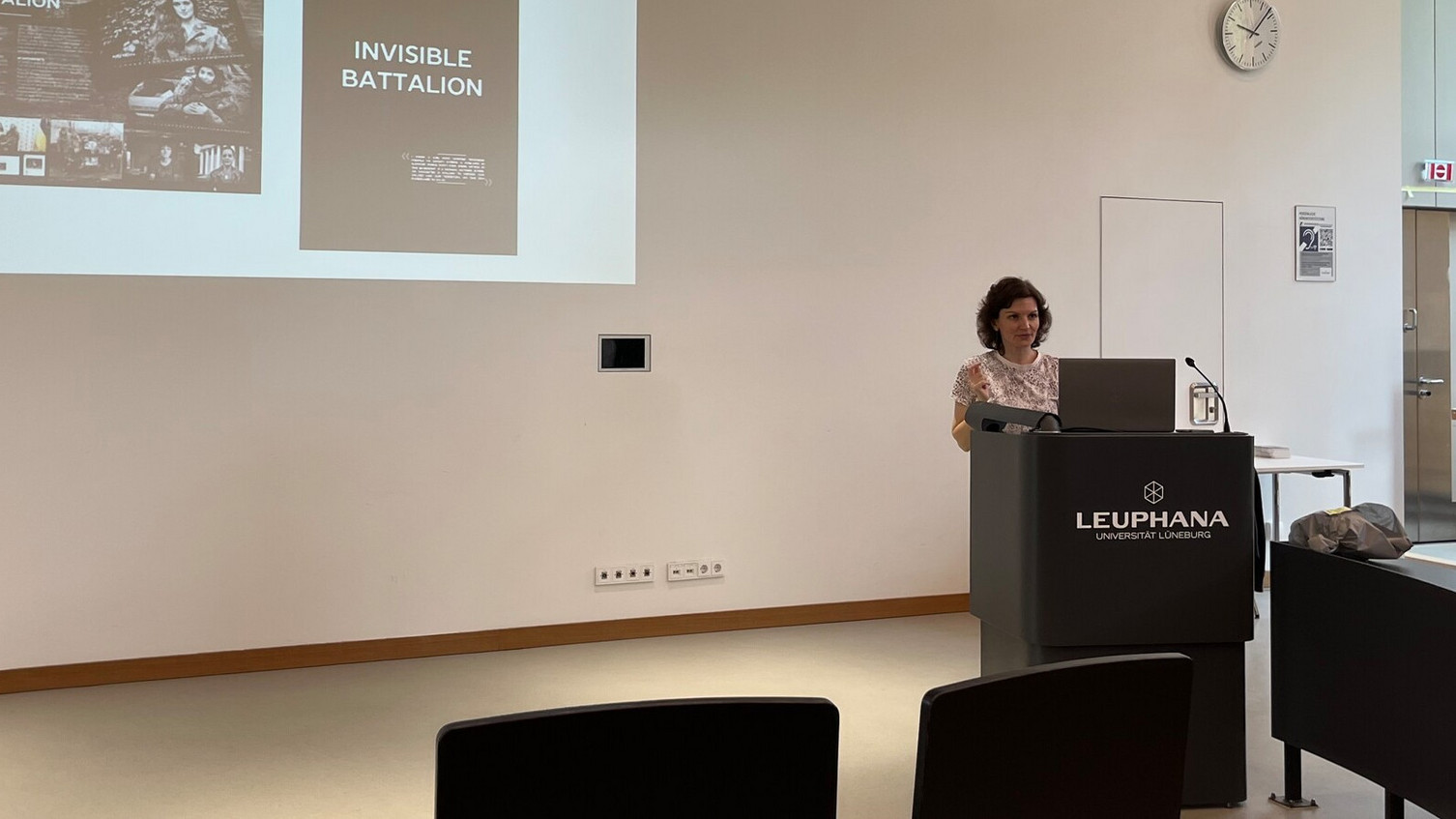Making women's participation in the defence of Ukraine visible
Impulse by Tamara Martsenyuk
2023-06-21 Tamara Martsenyuk, a sociologist at the University of Kyiv-Mohyla Academy and currently a visiting scholar at Leuphana, presented findings from her ongoing research on gender and the military in Ukraine in a lecture on "Women's Participation in Defending Ukraine in Russia's War".
From the sniper Lyudmila Pavlichenko to today's female soldiers in the Ukrainian military: on the basis of biographies of Soviet female veterans and her own current studies, Tamara Martsenyuk is able to show that women cannot be reduced solely to the status of vulnerable and susceptible victims and must instead also be understood as actors of resistance with the power to act. This dual positioning as vulnerable and resistant is evident in the continuous participation of Ukrainian women in the military since the Second World War and is also found in political iconography, which repeatedly takes up the motif of the armed woman. Further evidence can be found in the participation rates of women in the military, in pop-cultural stagings (such as the wearing of leopard-patterned clothing alluding to the demand for tank deliveries to Ukraine) and in the jokes made about the Russian invaders: Comics and stickers depicting witches on flying brooms shielding Ukrainian airspace and shouting "Girls, let's close the sky", for example.
For Tamara Martsenyuk, a central finding of the studies on the "Invisible Battalion" is the very specific situation of women in the military. Many women who carry out military operations (e.g. as snipers) are officially employed in administrative, procurement or medical positions - their military performance thus remains invisible. In addition, there is a lack of infrastructure tailored to the needs of women. For example, there is a lack of uniforms and suitable protective equipment, shoes and hygiene articles. The military underestimates, stereotypes and thus ignores the contribution of women to the military resistance against Russia. The women themselves, on the other hand, see themselves as competent soldiers.
However, the situation of women has improved significantly since the Euromaidan (2013/14) and the occupation of the Donbas (2014) through the civil society engagement of women, the activism of women veterans and also through legal changes. "Ukrainian women managed to challenge traditional gender roles as caretakers and victims of a conflict and reclaimed visibility, recognition, and respect as revolutionaries and volunteers," says Tamara Martsenyuk.
This new visibility is also confirmed by representative population surveys on equality in the military, the willingness of armed resistance against Russia and the reshaping of the military, all of which point to a greater acceptance of female soldiers.
"Even open and full-scale conflicts like war do not affect everyone in the same way. The question of whose actions are invisible and whose voices are silenced runs along the familiar dimensions of social inequality, even in exceptional situations," says Prof. Dr. Lars Alberth, who organised the event together with Prof. Dr. Claudia Equit, "the emancipative performance of Ukrainian women highlighted by Prof. Martsenyuk calls for taking note of the difficult reality of military events and their consequences for different social groups."
Publications on this topic
The question of visibility and voice of marginalised actors in conflict-affected life situations is a central issue for social pedagogy in diverse societies, for example when it comes to participation and complaint procedures in the out-of-home placement of adolescents or children's attempts to make their voices heard for the experience of violence in families.
- Bühler-Niederberger, D., & Alberth, L. (2023). Struggling for open awareness - Trajectories of violence against children from a sociological perspective. Children and Youth Services Review, 145, 106769.
- Equit, C., & Purtell, J. (Eds.). (2023). Children's rights to participate in out-of-home care: International social work contexts. Routledge, Taylor & Francis Group.

